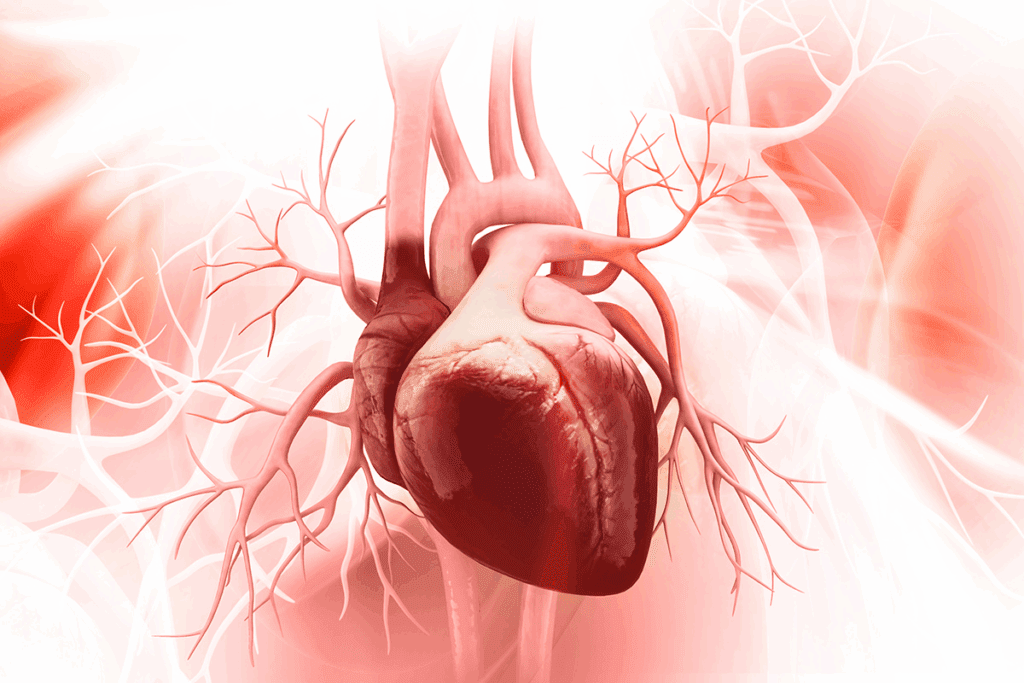Last Updated on November 25, 2025 by Ugurkan Demir

Ischemic heart disease (IHD), also known as coronary artery disease (CAD), is a major cause of death globally. It’s vital to know the risk factors that contribute to IHD. Learn 12 major risk factors of ischemic heart disease and how to protect your heart from damage..
At Liv Hospital, we stress the importance of understanding both modifiable and non-modifiable coronary risk factors. This knowledge helps in preventing and managing IHD. By knowing these factors, people can take steps to keep their heart healthy.

It’s key to grasp ischemic heart disease to tackle its wide reach. This disease, also called coronary artery disease, happens when heart arteries get narrowed or blocked. This reduces blood flow to the heart muscle.
This issue can cause chest pain, known as angina, or even a heart attack if blood flow is severely cut off. The blockage is usually because of atherosclerosis. This is when plaque builds up in the arteries.
Ischemic heart disease means the heart doesn’t get enough blood because of narrowed or blocked arteries. These arteries are key for bringing oxygen-rich blood to the heart muscle. Without enough oxygen, the heart muscle can get damaged or not work right.
Things like high blood pressure, high cholesterol, smoking, diabetes, and obesity can raise your risk. These factors help atherosclerosis grow, which is the main cause of ischemic heart disease.
Ischemic heart disease is the top killer globally, causing millions of deaths each year. The World Health Organization says it’s behind a huge number of deaths. It affects both men and women, but the risk grows with age.
Knowing how widespread ischemic heart disease is helps us find ways to stop and manage it. By tackling risk factors and encouraging healthy heart habits, we can lessen its impact. This can help those at risk live better lives.

It’s key to know and manage modifiable risk factors to lower CAD risk. Lifestyle choices and health conditions play big roles in heart disease.
Modifiable risk factors are things we can change to lower CAD risk. High blood pressure, high LDL cholesterol, diabetes, smoking, obesity, lack of exercise, and bad diet are examples. By tackling these, we can lessen heart disease’s impact worldwide.
Key Modifiable Risk Factors:
These risk factors lead to atherosclerosis, CAD’s main cause. High blood pressure harms blood vessel linings, making them blockable. High LDL cholesterol causes artery plaque, raising heart disease risk.
| Modifiable Risk Factor | Contribution to CAD |
| High Blood Pressure | Damages blood vessel lining, increasing susceptibility to blockage |
| High LDL Cholesterol | Leads to plaque buildup in arteries |
| Smoking | Damages cardiovascular system, increases blood pressure and risk of thrombosis |
| Diabetes | Increases risk of heart disease through high blood sugar levels and associated metabolic changes |
By managing these risk factors, we can lower heart disease risk. A mix of lifestyle changes and medical care is key. This approach helps control these risk factors effectively.
High blood pressure, or hypertension, is a major risk for serious heart issues if not managed. It’s key to understand and control high blood pressure to keep the heart healthy.
Hypertension harms the heart in several ways. It makes the heart work harder, leading to thickening of the heart muscle. This can cause heart failure over time. Also, high blood pressure makes blood vessels narrower and less flexible. This makes it harder for blood to reach the heart, which can lead to a heart attack.
The effects of hypertension on the heart include:
Knowing the right blood pressure targets is key for heart health. The American Heart Association suggests a target of less than 130/80 mmHg for most adults. Staying within this range can greatly lower the risk of heart disease.
| Blood Pressure Category | Systolic mmHg | Diastolic mmHg |
| Normal | Less than 120 | Less than 80 |
| Elevated | 120-129 | Less than 80 |
| Hypertension Stage 1 | 130-139 | 80-89 |
| Hypertension Stage 2 | 140 or higher | 90 or higher |
By managing blood pressure and hitting these targets, people can greatly lower their risk of heart disease and related problems.
Cholesterol’s impact on heart health is huge. It’s a fat in our blood that helps our bodies work right. But, too much or too little can harm our hearts.
There are two kinds of cholesterol: LDL and HDL. LDL cholesterol is called “bad” because it can clog arteries. HDL cholesterol is “good” because it helps clean out bad cholesterol.
It’s key to keep LDL and HDL in balance. Too much LDL can cause atherosclerosis, which is bad for your heart.
To avoid coronary artery disease (CAD), we need the right cholesterol levels. The American Heart Association says:
Staying within these ranges can lower CAD risk. Eating well, exercising, and not smoking can help keep cholesterol levels right.
Knowing how cholesterol affects our hearts and managing it can lower heart disease risk. This promotes better heart health.
Diabetes mellitus is a big problem for heart health worldwide. People with diabetes face a higher risk of heart disease, including coronary artery disease. This section will look at how diabetes affects heart health and how to manage it to keep the heart safe.
Diabetes harms blood vessels and nerves that control the heart, raising heart disease risk. High blood sugar levels over time can lead to atherosclerosis, a condition where plaque builds up in arteries, making heart health worse.
Also, people with diabetes often have other heart disease risk factors like high blood pressure and high cholesterol. These factors make heart disease risk even higher.
Managing diabetes well is key to lowering heart disease risk. We suggest a complete plan that includes:
A healthy lifestyle is key to managing diabetes and protecting heart health. By controlling blood sugar and tackling other heart disease risk factors, people with diabetes can lower their risk of coronary artery disease.
In conclusion, diabetes is a big risk for heart disease. But by understanding the risks and taking steps to manage diabetes, people can protect their heart health and lower their heart disease risk.
Smoking harms the heart and blood vessels, raising the risk of heart disease and stroke. Tobacco use, including smoking, is a major risk factor for heart disease. Quitting is key to reducing this risk.
Smoking damages the inner lining of blood vessels, making them more prone to blockages. This damage leads to blood clots, causing heart attacks and strokes. Smoking also increases blood pressure and heart rate, straining the heart.
The chemicals in tobacco smoke, including nicotine and carbon monoxide, play a significant role in this process. Nicotine raises heart rate and blood pressure. Carbon monoxide reduces oxygen to the heart muscle.
Quitting smoking greatly reduces heart disease risk. Within 20 minutes, heart rate and blood pressure drop. After 12 hours, carbon monoxide levels in the blood return to normal. After 24 hours, heart attack risk starts to decrease.
The benefits of quitting smoking are numerous and well-documented. They include better circulation, reduced heart disease risk, and lower risk of smoking-related illnesses. We encourage anyone who smokes to seek support and resources to help them quit.
By quitting smoking, individuals can greatly improve their heart health and overall well-being. We can work together to overcome addiction and reduce heart disease risk from smoking.
Exploring the risks of ischemic heart disease, we see how obesity and physical inactivity play a big role. These two are closely linked and greatly raise the risk of heart disease.
Extra weight makes the heart work harder to pump blood. This can cause the heart’s left ventricle to grow. Known as left ventricular hypertrophy, it can lead to heart failure if not treated.
Carrying extra weight, and belly fat in particular, puts more pressure on the heart. This can cause high blood pressure and diabetes, both big risks for heart disease.
Regular exercise is key for heart health. It helps manage weight and directly benefits the heart. Exercise improves blood flow, lowers blood pressure, and makes the heart work better.
We suggest at least 150 minutes of moderate exercise, or 75 minutes of vigorous exercise, each week. Adding strength training can also boost heart health.
Measuring obesity involves checking Body Mass Index (BMI) and waist size. Aiming for a BMI of 18.5 to 24.9 is ideal. Keeping waist size under 40 inches for men and 35 inches for women also helps.
Eating a healthy diet and staying active are essential. Focus on fruits, veggies, whole grains, and lean proteins to manage weight and improve heart health.
Unhealthy diets are a big risk for Ischemic Heart Disease. What we eat greatly affects our heart health. Some foods can raise the risk of heart disease.
Diets with lots of saturated fats, trans fats, and cholesterol are bad for the heart. These diets often include:
These habits can cause high blood pressure, high LDL cholesterol, and obesity. All these are risks for Ischemic Heart Disease.
To lower heart disease risk, eat a heart-healthy diet. It should be rich in:
Following these tips can help by improving blood fats, managing weight, and controlling blood pressure.
Key Dietary Changes are to cut down on saturated and trans fats. Also, limit dietary cholesterol and eat more omega-3 fatty acids from fatty fish.
By choosing better foods, we can lower our risk of Ischemic Heart Disease. This helps keep our hearts healthy.
Some risk factors for heart disease can be controlled, but others are fixed. Knowing these non-changeable risk factors is key. It helps us understand our heart disease risk and take steps to prevent it.
Age is a big risk factor for heart disease. The risk grows with age for both men and women. But, the age when this risk starts is different for each sex.
For men, the risk goes up after 45. Women start seeing a rise in risk after 55, mainly after menopause.
Age-Related Risk Comparison
| Age Group | Men | Women |
| <45 | Low Risk | Low Risk |
| 45-54 | Moderate Risk | Low-Moderate Risk |
| 55-64 | High Risk | Moderate-High Risk |
| >65 | Very High Risk | High-Very High Risk |
Sex affects heart disease risk. Men face a higher risk at younger ages than women. But, women’s risk goes up after menopause, making it similar to men’s by older age.
A family history of heart disease is a fixed risk factor. If you have a first-degree relative with heart disease early on, you’re at higher risk. Genetics can affect heart disease risk by influencing things like lipid levels and blood pressure.
Knowing about these non-changeable risk factors helps us understand our overall risk. While we can’t change age, sex, or family history, we can manage other risk factors. This helps lower our heart disease risk.
Some long-term health issues raise the risk of heart disease. We’ll look at how chronic kidney disease, autoimmune disorders, and other conditions affect this risk.
Chronic kidney disease (CKD) means your kidneys slowly lose function. CKD can lead to heart disease because of inflammation, anemia, and toxin buildup.
Key factors linking CKD to heart disease:
Autoimmune disorders like rheumatoid arthritis and lupus can raise heart disease risk. These conditions cause chronic inflammation that harms the heart.
The role of inflammation: Long-term inflammation can cause atherosclerosis. This is when plaque builds up in arteries, increasing heart disease risk.
Other chronic conditions, like COPD and certain infections, also increase heart disease risk. It’s important to manage these conditions well to keep your heart healthy.
| Condition | Impact on Heart Disease Risk |
| Chronic Kidney Disease | Increases risk due to inflammation and toxin buildup |
| Autoimmune Disorders | Contributes to heart disease through chronic inflammation |
| COPD | May increase risk due to low oxygen levels and inflammation |
Understanding and managing risk factors can greatly lower the chance of heart disease. We’ve looked at factors like high blood pressure, cholesterol, diabetes, smoking, and obesity. These all play a part in heart disease.
To manage these risks, making lifestyle changes is key. Eating well, staying active, and quitting smoking can help a lot. We also know that some risks, like age and family history, can’t be changed.
By focusing on heart health and managing risks, we can prevent heart disease. This approach helps people live better lives. It’s all about taking control of your heart health.
Ischemic heart disease, also known as coronary artery disease, happens when the heart’s blood supply is blocked. This damage harms the heart muscle.
High blood pressure, high cholesterol, diabetes, and smoking are big risks. Obesity, lack of exercise, and a bad diet also play a part. Age, sex, and family history matter too.
High blood pressure strains the heart muscle. This can make the heart walls thicken. It might even lead to heart failure.
LDL, or “bad” cholesterol, can clog arteries. HDL, or “good” cholesterol, helps clear out bad cholesterol from the blood.
Diabetes harms blood vessels and nerves around the heart. It also raises bad cholesterol and triglycerides in the blood.
Quitting smoking improves blood flow and lowers blood pressure. It also cuts down the risk of heart attack and stroke.
Obesity strains the heart and raises blood pressure. It also increases the risk of diabetes and high cholesterol.
Eating too much saturated and trans fats, sodium, and sugar is bad for the heart. But, eating fruits, veggies, whole grains, and lean proteins is good.
No, you can’t change age, sex, or family history. But knowing these can help you manage other risks and lower your overall risk.
These conditions can raise heart disease risk. They cause inflammation, damage blood vessels, and lead to other risk factors like high blood pressure and cholesterol.
The best blood pressure is below 120/80 mmHg. Cholesterol goals vary, but aim for LDL under 100 mg/dL and HDL over 60 mg/dL.
Controlling high blood pressure, cholesterol, diabetes, smoking, obesity, and inactivity can greatly reduce heart disease risk. It improves heart health overall.
Subscribe to our e-newsletter to stay informed about the latest innovations in the world of health and exclusive offers!